Static Electricity
1/26
There's no tags or description
Looks like no tags are added yet.
Name | Mastery | Learn | Test | Matching | Spaced |
|---|
No study sessions yet.
27 Terms
Difference between negative and positive Charge
Opposite charges attract; similar charges repel each other
Symbol for Charge
Q
Unit of Charge
Coulomb(C)
Coulomb
The amount of charge that passes when a current of one amp flows for one second.
Experiment to show the forces between two similarly charged electric charges.
Use two rods of the same charge
Hang one from a retort stand.
Bring the other like charged rod close to the one hanging.
The rods will repel each other, showing the force between them is repulsive.
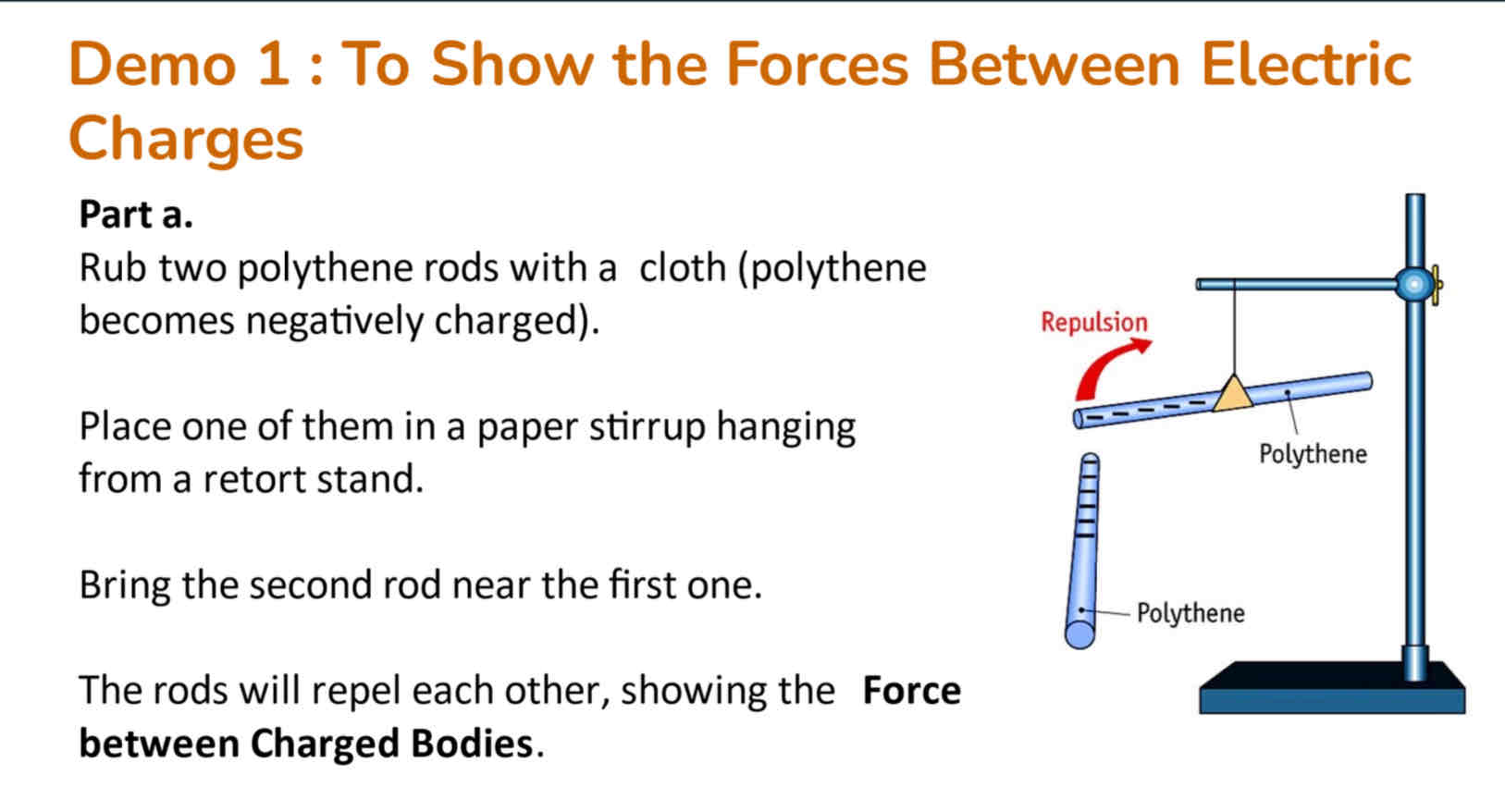
Experiment to show the forces between Opposite Electric Charges.
Use two rods of different charge
hang one from a retort stand
Bring the second one near it
The rods will attract each other showing the force between the charged bodies is attractive.
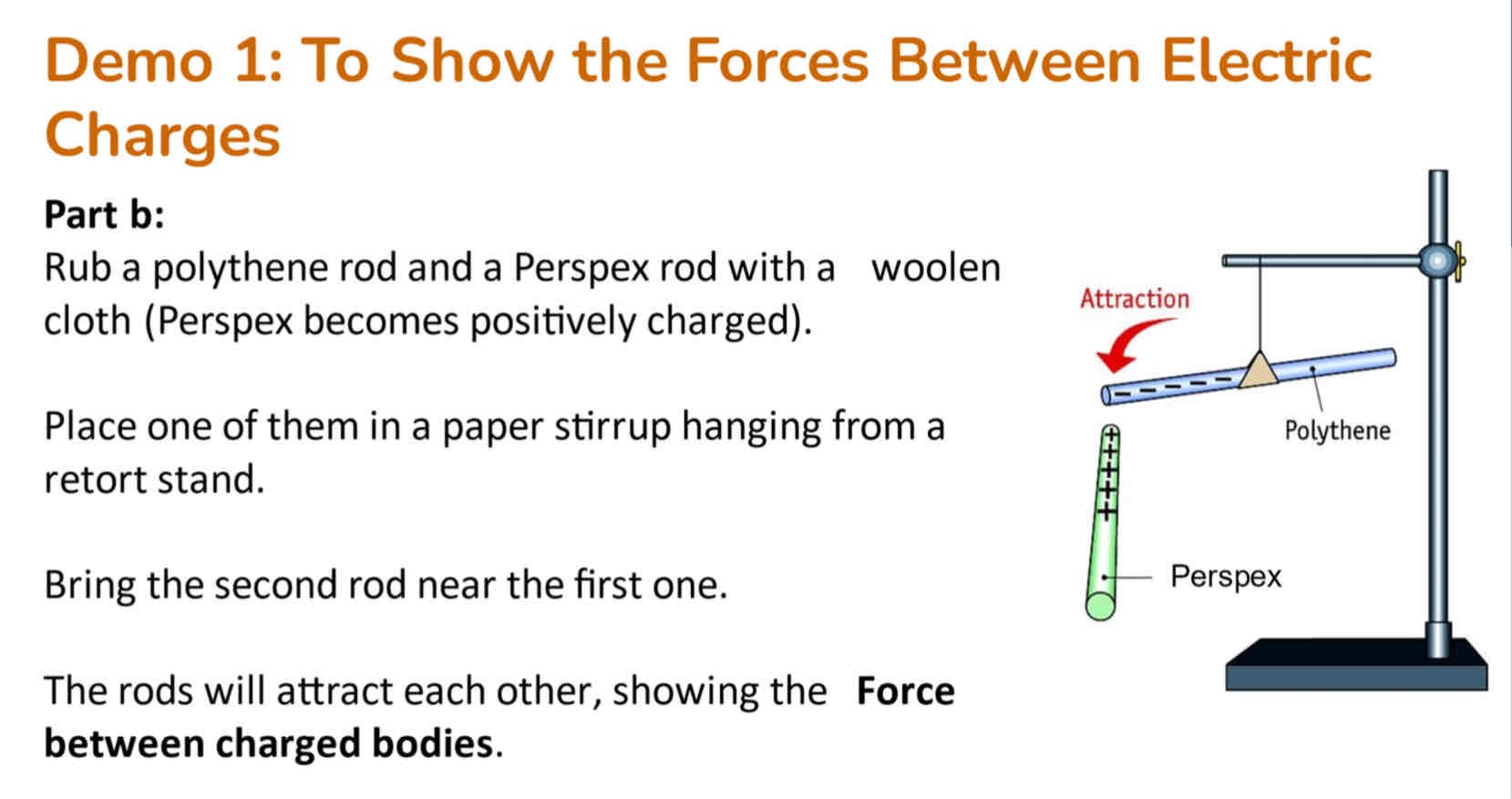
Induction
The method of charging a conducting object.
Charging a conducting object (positively or negatively) by Induction
Bring a charged rod near an insulated metal conductor
Opposite charged electrons are attracted and the rest are repelled making it (P/N) charge on one side and the opposite on the other.
Keeping the charged object in place, earth the conductor by touching it with your finger.
Remove your finger. Then remove the rod. The conductor will now be (P/N) charged.
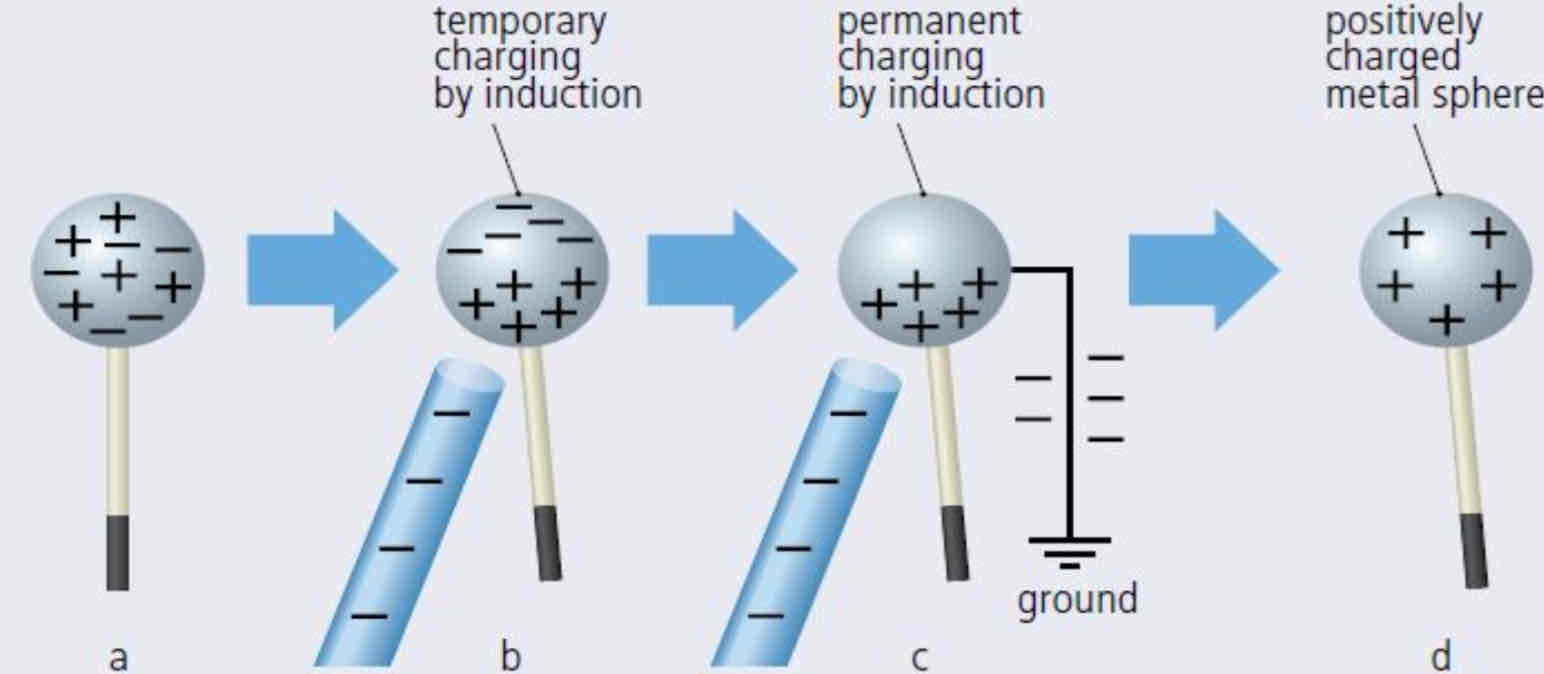
Charging two conducting objects by Induction
Place two insulated spherical conductors so that they are touching each other.
Bring charged rod close to the insulated conductor.
Separate the spheres.
One sphere is positively charged and the other is negatively charged.

To Charge a Gold Leaf Electroscope by induction.
Bring a charged rod close to an insulated conductor
Keeping the charged object in place, earth the electroscope by touching it with a finger
Remove your finger then remove the rod.
The conductor is now (N/P) charged

Diagram of Gold leaf electroscope (parts of a GLE)
Metal Cap
Insulated Joint
Gold Leaf
Metal Case
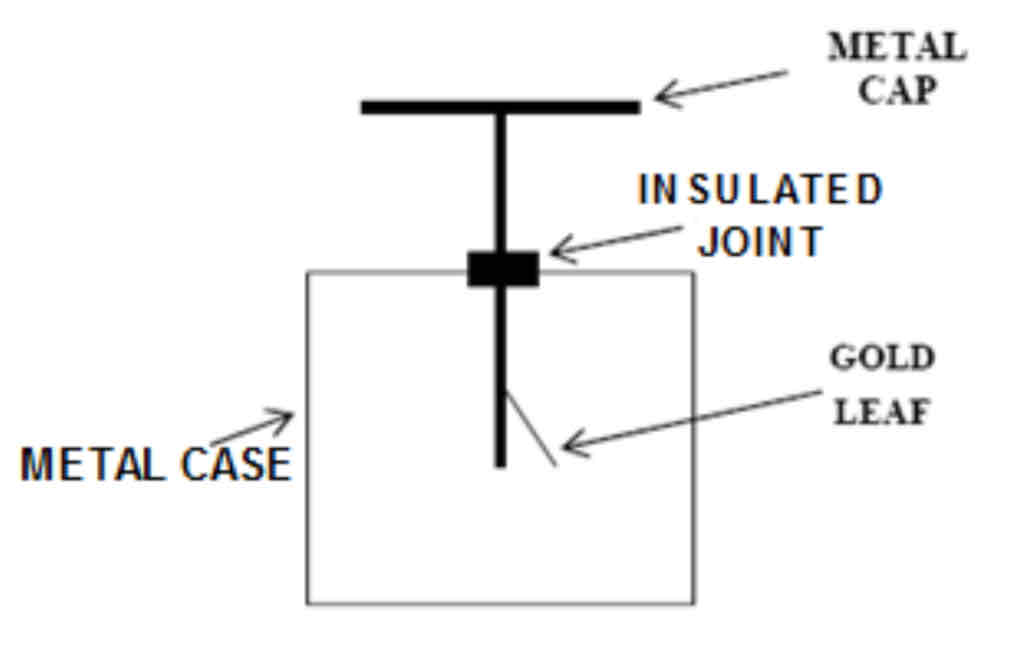
Functions of a Gold Leaf Electroscope(GLE)
To detect charge: if a charged object is brought close to the electroscope the leaf rises indicating charge.
To indicate approximate size of a charge: The greater the charge of an object the greater the divergence the leaf produces.
To distinguish between positive and negative charge: if the electroscope is given a known charge and a similar charge is brought close to it, the leaf will rise even further. If an unlike charge is brought near it, the leaf will collapse.
To test if an object is a conductor or an insulator: if a conductor is brought near it, the leaf will collapse. If an insulator is used, nothing happens.
Experiment to prove all static charge resides on the outside of a conductor.
Charge the conductor
Using a proof plane, touch the inside of the can and bring it up to a GLE (notice there is no deflection)
Touch the proof plane off the outside of the can to bring it up to the GLE (Notice there is deflection)
Conclusion: charge resides on outside only.
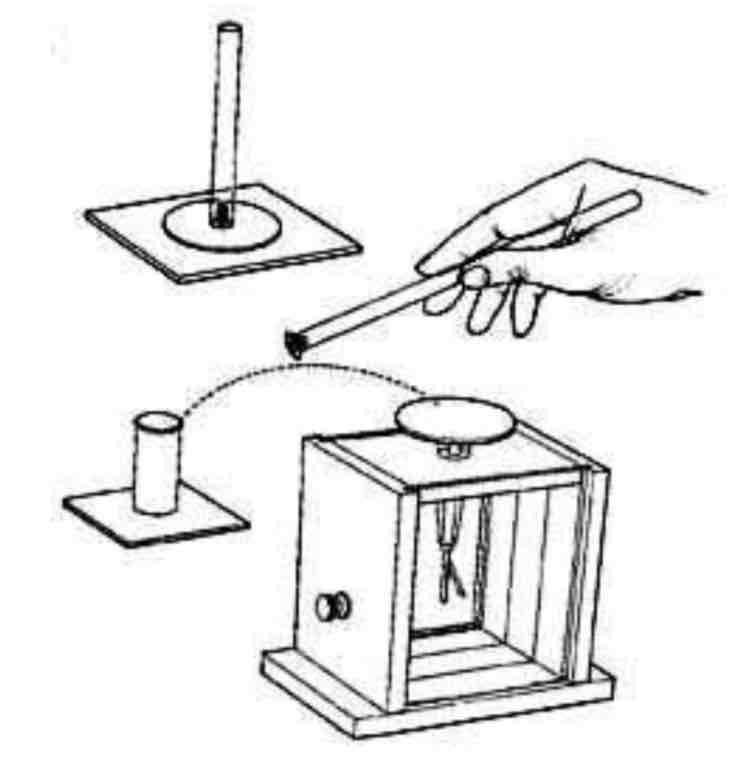
Experiment to show charge density on a conductor is greatest where the conductor is most pointed.
Charge a pear shaped conductor.
Use a proof plane to bring charge from curved end to the GLE, and note that there is a minimal deflection.
Use a proof plane to bring charge from the pointed end to the GLE, and note that the deflection is much greater.
Conclusion: Most of the charge is at the pointed end.

Coulomb’s Law
The force between two point charges is directly proportional to the product of the charges and inversely proportional to the square of the distance between them
Point Discharge
When static charge builds up at a pointed object and discharges into the surrounding air
How does point discharge occur
When the buildup of charge is large enough at a point, the repulsion between like charges becomes so great that some ‘jump off’ the surface colliding with and ionising atoms in the surrounding air.
Experiment to show point discharge
Attach a nail to the surface of a working Van der Graff generator.
Bring a candle close to the point
Notice the flame moves away.
Conclusion: This is because the ‘wind’ generated by point discharge.
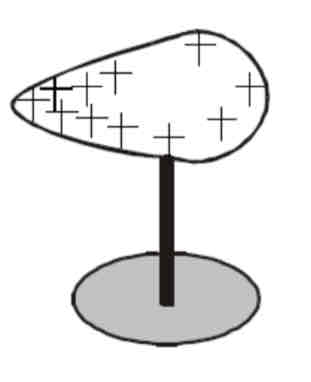
Experiment to demonstrate an electric field pattern
Turn on the power supply.
Sprinkle semolina powder over the electrodes
Observation: Semolina forms electric field pattern
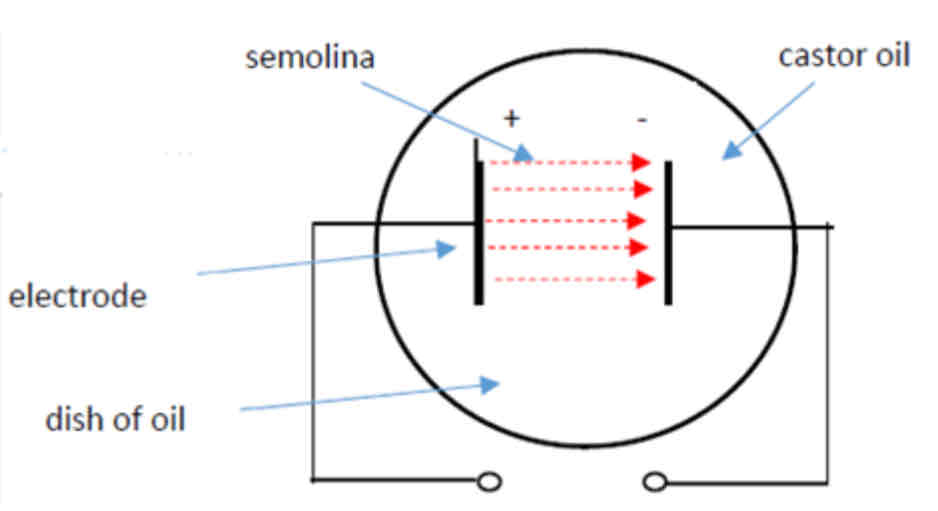
Electric Field
A region of space where an electric charge experiences an electrostatic force.
An electric field line
A line drawn in an electric field showing the direction of the force on a positive charge if placed in the field.
Electric field patterns for individual positive and negative charges.
Electric field lines come out of a positive charge and into a negative charge.

Electric Field Pattern for like charges

Electric field pattern for opposite charges

Electric Field Strength (E) at a point (Important and common)
The force per unit charge at that point.
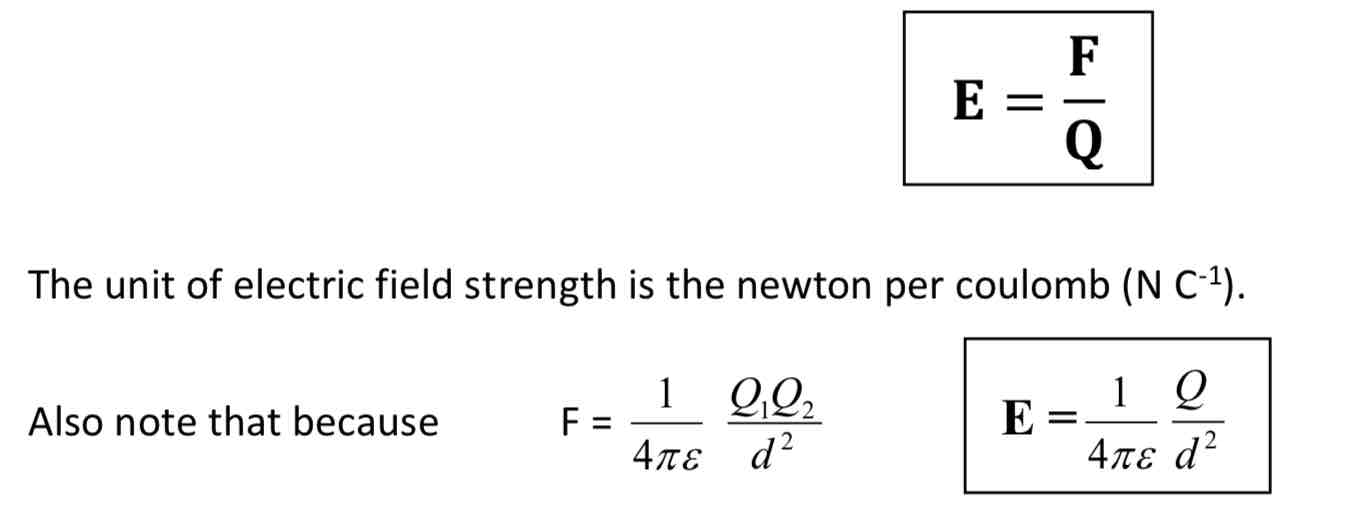
Applications of Electric fields
Precipitators (to extract smoke particles from the air)
Photocopier machines
Industrial hazards from electric fields
Explosion in flour mills or when fuelling an aircraft
Damage to integrated circuits
Electric shock